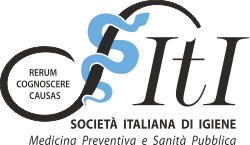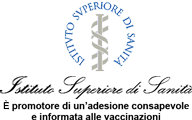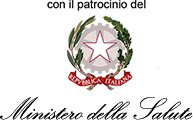The ethical principle of credibility passes through transparent communication and it is perceived by the methods, tools, forms and objectives of the project.
Before discussing transparency in vaccination practice, we must first introduce the ethical principle of credibility1.
1. The ethical principle of credibility
We can speak of credibility (or "trust"2) when, within a relationship between the institution and the public, the institution shows itself to be responsible3. This is important to reiterate, as the effectiveness of public health interventions largely depends on credibility; and, one of the most important aspects that contribute to forming credibility is transparency.
To "build credibility" we must always start by listening to the public. Especially in a climate of mistrust, institutional credibility can depend up to 50% on the organisation’s capacity for empathy4. While by now accustomed to sending messages to the public, there should be a greater promotion of the institution’s participation. It should be involved in health issues and encouraged to send return messages itself. In fact, it is these messages that enable the development and guidance of the transparency policy. In other words, the ethical problem of transparency is, at its roots, a matter of communication.
2. Transparent communication
What was the criteria that guided the VaccinarSì project? Communication, it should be remembered, is a process based on three elements: 1) a message; 2) a means of transmitting the message; 3) a relationship between those who produce the message and those who receive it. Consequently, also in this area, in order for institutional communication to be credible, or ethical, it must be characterised by transparency at every stage and in every element.
2.1 The content of the message
If we consider the content5, for example, transparent communication on vaccinations will include at least:
- technical aspects: characteristics and mode of action of vaccines;
- planning aspects: criteria that guided the drafting of the vaccination schedule;
- clinical-epidemiological aspects: risks and benefits of vaccination; safety and efficacy; severity and frequency of the disease to be prevented.
In order to be transparent, the content must also be truthful: that is, it is a question of reporting objective data, produced with a method which is valid from a scientific point of view. Another criterion to take into account is honesty in clarifying the limits of one's knowledge, providing without omissions the information that one possesses.
Finally, it is necessary for the content to respond to parents’ doubts, which we group into four areas (safety, naturalness, social aspects and conspiracy theory)6.
It is interesting to note that such doubts are precisely what the anti-vaccination movements use as arguments to justify their opposition. Therefore, a further ethical imperative emerges, as only correct content can balance propaganda that is too often anecdotal and unscientific.
2.2 The means of transmission
With regard to the means, close attention must be paid to the use of language. For communication to be transparent, it must first be “understood”. Consequently, healthcare professionals are asked to use adequate communication techniques7, so that the correct content is transmitted in clear and understandable language (especially when it comes to reporting statistics or concepts that are not in common use).
Help can come from the methodologies of risk communication: even if the vaccine is not a threat to health, in reality the lack of adherence suggests that part of the population perceives it as such; it is therefore precisely the different perception of risk8, thanks to its emotional conditioning, which influences personal choices regarding vaccines.
2.3 The communicative relationship
For communication to be effective, it must have the aim of encouraging autonomy in decision-making so that adherence to vaccinations is voluntary and conscious. The Veneto Region paved the way for this when it suspended mandatory vaccination starting from the cohort born in 2008, aiming for a conscious choice by parents residing in its territory.
3. Financing and Human Resources
Unlike what normally happens for various websites, we believe it is right and necessary to declare the sources of livelihood and human resources available to the VaccinarSì project. It is an operation of transparency by those who have nothing to hide and whose only interest is in science and the health of the population.
Alongside the Italian Society of Hygiene, Preventive Medicine and Public Health (SITI), Farmindustria supports the initiative with an unconditional grant.
The site makes use of the collaboration between University Professors, Researchers, Public Health Operators, and members of civil society. This collaboration is unpaid. The names of all collaborators are listed on the site (see References) and they can be contacted by e-mail.
The reference communication agency is PARTE srl of Padua (Italy).
4. The Internet and the "VaccinarSì" project
Having outlined how the elements of institutional communication can be made "transparent", also in the field of vaccination, let us now consider their concrete application. When, in 1994, a girl with hearing loss became Miss America, in an interview the hearing damage was attributed to the DTP vaccine, administered at 18 months of age. The news appeared in the New York Times on September 18th. Only on the 26th of the same month did the newspaper publish a retraction: her deafness was the result of meningitis.
How many will have read the retraction, and to what extent will the first news item have affected the collective imagination?
The example shown suggests how incorrect communication affects the promotion of vaccination practice and how enormous and essential the impact of the media is. Today, however, the circulation of news no longer depends only on the press: internet sites and social media record massive access, and users take a position, including on vaccinations, based on opinions or statistics collected from the network. Upon closer inspection, however, such information often turns out to be inaccurate or unfounded. One of the principles governing the internet is in fact the freedom to disseminate content, however, this makes it difficult to verify its origin and reliability. Moreover, users do not always have the technical or scientific knowledge to evaluate or compare different content.
Extent of the phenomenon: about 80% of users access the network to find out about health issues. Of these, a fifth is looking for data on vaccines, and 70% later claim to have been influenced10 by what they find: an interesting point, considering that messages opposing vaccinations are widespread on the internet. In this regard, it has been observed that it is enough to view an anti-vaccination site for just 5-10 minutes to increase perception of the risks associated with vaccines and decrease perception of the risks of failing to vaccinate11.
The VaccinarSì project, promoted by SItI, fits into this context. The project was created with the aim of combating, on the web itself, the disinformation spread within and, at the same time, showing the validity of vaccinations. Specifically12, through our internet portal (www.vaccinarsi.eu) we wish to offer scientific data processed in a clear and simple way, and accompanied by verifiable sources.
The portal is mainly intended for parents and the general public, but also aims to provide support to healthcare professionals involved in vaccination practice. In other words, it is a matter of creating a valid reference point for those who intend to learn about vaccines, which helps to develop critical and autonomous basic knowledge, while also guaranteeing useful tools for daily practice.
In developing the content, transparency, as described in the previous paragraphs, is applied as a standard ethical criterion. The basic strategy brings together the skills and knowledge of health professionals (hygienists, paediatricians, researchers, etc.) and a communication agency: the former are required to produce truthful, complete and updated scientific data (content); the second, the most suitable methods to make them immediately accessible (means). In this way, we try to establish a persuasive, responsible and credible relationship with the user.
The content answers the main questions, explaining both the vaccines and the diseases they prevent, without neglecting the adverse consequences of both. It also takes into account the main allegations against vaccinations and the false myths that accompany them, with particular attention paid to the associated perception of risk.
The level of detail varies from a summary and schematic presentation (basic skills, for all users), to direct reference to the scientific literature consulted (specific skills); the verifiability of sources by users is an element of transparency to which particular importance must be given, both as an ethical requirement in itself, and because it is often overlooked by anti-vaccination movements. The use of visual aids (graphics and images) also facilitates the understanding of textual or numerical information.
In conclusion, transparency is among the determining elements on which the ethical principle of credibility is based. In practice, it translates into a specific quality of the communication. It is with the aim of promoting transparency of the information on vaccines that the VaccinarSì project was born in an attempt to create an ethically based dialogue on public health issues, which at the same time promotes institutional credibility and the health of the population.
Sources / Bibliography
- Isaacs D, An ethical framework for public health immunisation programs. NSW Public Health Bull 2012; 23(5-6): 111-115. Verweij M, Dawson A, Ethical principles for collettive immunisation programmes. Vaccine 2004; 22: 3122-3126.
- Kirch W (ed.), Encyclopedia of Public Health, NewYork: Springer 2008. Post SG (ed.), Encyclopedia of Bioethics: Farmington Hills (MI), Gale 2003.
- Con responsabilità intendiamo la situazione in cui i soggetti coinvolti in una decisone fanno ciò che sono tenuti a fare e rispondono delle proprie azioni (WHO 1999).
- Covello VT et al., Risk communication, the West Nile virus epidemic, and bioterrorism: responding to the communication challenges posed by the intentional or unintentional release of a pathogen in an urban setting. J Urban Health 2001 Jun; 78(2): 382-391.
- Bartolozzi G, Vaccini e vaccinazioni, Milano: Elsevier Masson 2012.
- Kata A, Anti-vaccine activists, Web 2.0, and the postmodern paradigm – An overview of tactics and tropes online by the anti-vacciantion movement. Vaccine 2012; 30: 3778-3789.
- Diekema DS, Improving childhood vaccination rates. N Engl J Med 2012; 366(5): 391-393.
- Brewer NT et al., Meta-analysis of the relationship between risk perception and health behavior: the example of vaccination. Health Psychology 2007; 26(2), 136-145. Weinstein ND et al., Risk perceptions assessment and relationship to influenza vaccination. Health Psychology 2007; 26(2): 146-151
- Opel DJ et al., Social Marketing as a strategy to increase immunization rates. Arch Pediatr Adolesc Med 2009; 163(5): 432-437.
- Kata A, Anti-vaccine activists, Web 2.0, and the postmodern paradigm – An overview of tactics and tropes online by the anti-vacciantion movement. Vaccine 2012; 30: 3778-3789.
- Betsch C et al., The influence of vaccine critical websites on perceiving vaccination risks. J Health Psychol 2010; 15(3): 446-455.
- The project also envisages the production of “classic” information tools such as multimedia presentations, videos for the media, printed media, scientific articles, etc.; methods linked to the current communication context will also be used (social networks, smartphone applications).



